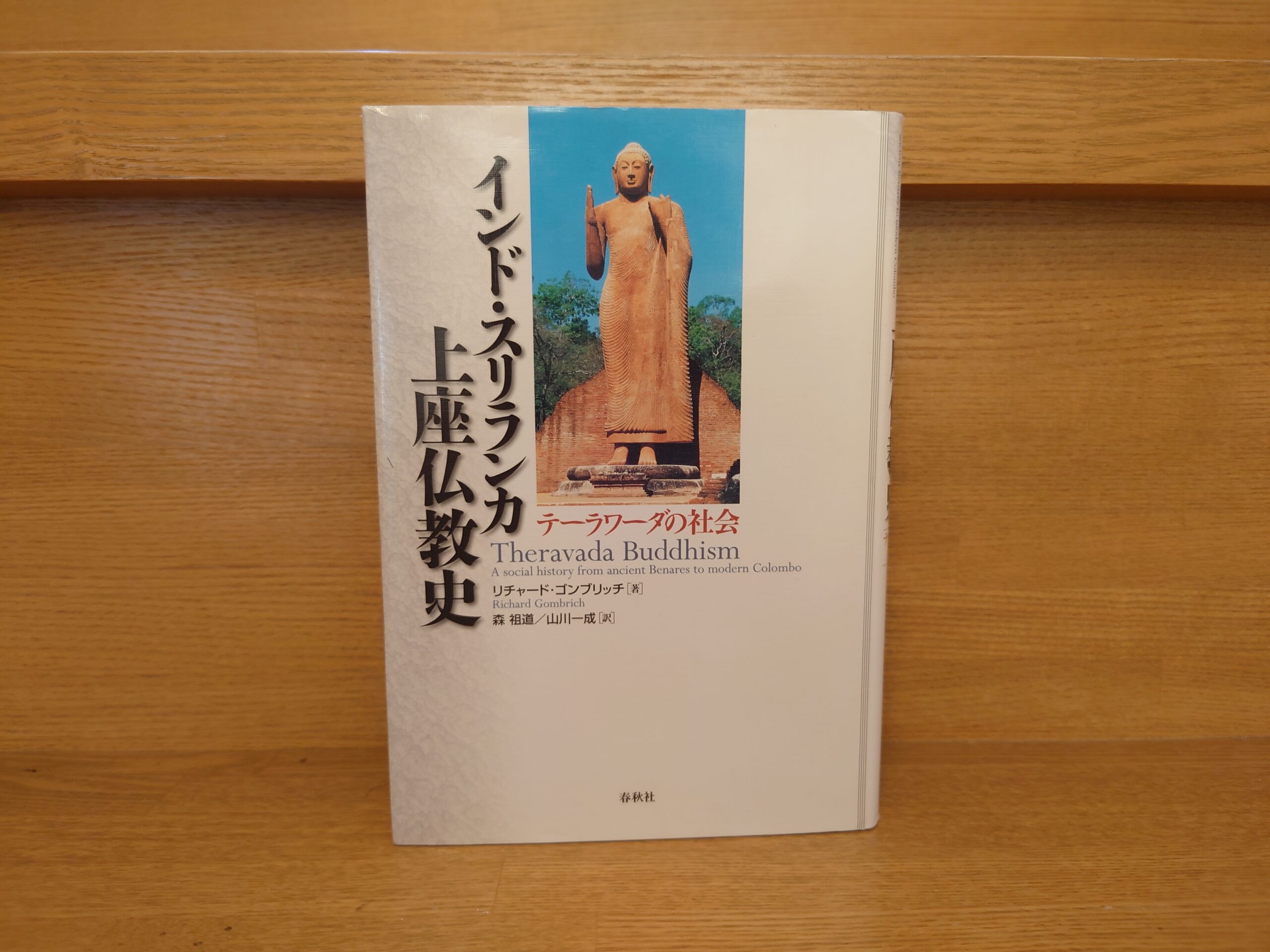Overview and Comments on R. Gombrich's "History of Theravada Buddhism in India and Sri Lanka" - "Who Listened to Buddha's Teachings?" a great book that makes us think about the connection between society and Buddhism.
Introduced here is "History of Theravada Buddhism in India and Sri Lanka: Society of Theravada," written by Richard F. Gombrich and translated by Sodo Mori and Kazunari Yamakawa, published by Shunju-sha in 2005.
How has Theravada Buddhism (Theravada Buddhism) been transformed in Sri Lanka, which has been undergoing drastic changes due to urbanization and population growth from its introduction to the present day? This study examines this transition from a socio-historical perspective.
AmazonProducts Page.
This book is highly recommended for learning the general framework of Sri Lankan Buddhism.
Sri Lanka is a country where Theravada Buddhism, which is different from Mahayana Buddhism in Japan, has taken root, as the title of this book suggests. The main flow of this book is to trace the history of Buddhism in Sri Lanka back to the birth of Buddhism in India.
The translator's afterword at the end of the book describes the features of this book as follows
This section provides an overview of the original work and its characteristics. This book consists of eight chapters. In the first chapter, "Introduction," the author first presents the problem of "the social history of Buddhism" as the research theme of this book. As the author of the book states, the study of "Buddhist social history" is indeed a rare attempt to examine and verify the history of Buddhism from the viewpoint of its contact with the external environment and society (which, according to the Buddhist expression, is nothing but the secular world) as the external conditions that have surrounded and established Buddhism. Moreover, the starting point of his study is Marxist social thought, Max Weber's sociology of religion, and traditional Western Christian thought. This is a true testament to Professor Gombrich's extensive knowledge of civilization and his broad perspective as one of the leading intellectuals of his day in England. This breadth of intellectual vision is one of the first characteristics of this book, which is the breadth of vision that extends horizontally across contemporaries. Secondly, the breadth of the book's vision is its vertical perspective, which starts from the Vedic period, the origin of Indian history (this alone occupies the first half of Chapter 2), and continues through India and Sri Lanka to the modern period, thus providing a long history. The history of Buddhism in India usually focuses on the Indian subcontinent, while the history of Buddhism in Sri Lanka begins with Devanand Piyatissa, a Sri Lankan king who was contemporary with King Asoka. The history of Buddhism in Sri Lanka alone has a length of approximately 2,300 years, which is longer than the history of Buddhism in any other country or region in history. In other words, this is the longest Buddhist history in history. This book is one of the features of this book, because it is a comprehensive view of the history of Buddhism in Sri Lanka up to the present day, and it is a consistent and continuous discussion of the history of Buddhism in India up to the reign of King Asoka. (This is one of the features of this book.)
As mentioned above, this book starts from the earliest religious and social conditions in India (Brahmanical period) before the advent of Gautama Buddha, and discusses the long history of Buddhism in India and Sri Lanka from the Brahmanical period to the modern and contemporary history of Buddhism in Sri Lanka from a socio-historical perspective, as a general history of Theravada Buddhism. The original subtitle of this book is "The History of Theravada Buddhism in India and Sri Lanka. This is the reason why the original subtitle of this book is "A Social History from Ancient Benares to Modern Colombo.
Shunju-sha, translated by Richard F. Gombrich, Sodo Mori, and Kazunari Yamakawa, History of Theravada Buddhism in India and Sri Lanka: The Theravada Society, p. 353-355.
As will be discussed here, what is unique about this book is its perspective on the "social history of Buddhism.
This book looks not only at ideological and historical issues, but also at how Buddhism existed in relation to the society of the time.
Among them, the following passages have left a particularly strong impression on me.
Unless an innovation was accepted by a large number of people, or at least by the influential, history will not remember it. Most religions that have flourished in the past did so not merely because their ideas were persuasive, but in some respects as a result of their influential patronage. Whatever their appeal to our emotions, the religions of the oppressed often remain unknown to the world (not all, Christianity being an exception).
Where does ideological persuasion inherently reside, or rather, and this is the real question for me, why are religious innovations acceptable? Religion, of course, does not consist only of ideas, but also of feelings and modes of behavior - customs and institutions. Nonetheless, keeping in mind the question of religious innovation and transition here, I believe that modes of behavior and emotions must also be discussed first and foremost through language and the ideas that language alone can convey. Thus, discussing "ideological persuasion" is a reasonable, short, and convenient way to discuss religious innovations in general.
My solution is that if a new idea offers an even better solution to the immediate problem than the one already serving, it will be accepted by the people in a convincing way.
Shunju-sha, Richard F. Gombrich, Sodo Mori, translated by Kazunari Yamakawa, History of Theravada Buddhism in India and Sri Lanka: The Theravada Society, p. 19-20.
To put it another way, it is simply a question of "who listened to the teaching?
Actually, I had a very memorable experience just before I read this book on this question of who listened to and was moved by Buddha's teachings.
That being said, I recently visited India for the first time. And that first stop was Haridwar, a sacred Hindu site on the upper Ganges.

If Buddha had said to the people bathing here, "Bathing does not save you," what would it have meant to them? I thought that Buddha's teaching was too unrealistic and unsympathetic to people living in the Hindu world (Brahmanism during Buddha's lifetime).
When we hear that Buddhism once flourished in India, we tend to imagine that many people in India took refuge in Buddhism, but I had a strong sense of what was really going on here.
How surprised I was when I read this book after returning to Japan! It was a straightforward discussion of the very question I had asked myself, "Who listened to Buddha's teachings?
I am sure you will all be surprised by this book. In the quote above, the term "ideological persuasion" was used, but what was persuasive to whom is a very big question. This is a great eye-opener that I hope many of you will read.
This book is a terrific work with such a perspective and even covers Buddhism in Sri Lanka.
This is a great book that I would highly recommend. It is a very gratifying book to learn about the major trends in Sri Lankan Buddhism. I highly recommend you to pick up a copy.
The above is "R. Gombrich, "History of Theravada Buddhism in India and Sri Lanka" - "Who Heard Buddha's Teachings?", a great book that makes us think about the connection between society and Buddhism.
Next Article.
Click here to read the previous article.
Related Articles





































